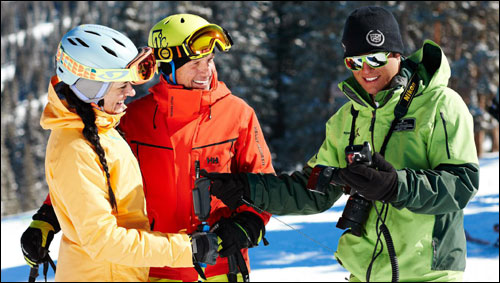Feb 19, 2014Mining companies worldwide have begun employing radio frequency identification technologies to automate manual processes, streamlining production and reducing costs. Most of the RFID solutions have been standalone applications. Sesa Goa, India's largest producer of iron ore, for example, is using RFID to speed up customers' deliveries (see Sesa Goa Automates Mining Logistics Operations). The Telfer gold mine in Western Australia deployed an RFID solution to track trucks underground (see Australian Mining Contractor Prevents Vehicular Collisions). And as we reported in the Nov./Dec. issue, many mining companies are adopting RFID personnel safety solutions to locate workers in emergencies (see Protecting Employees).
But to understand RFID's future in the mining industry, consider the new Totten nickel mine in Sudbury, Ontario, Canada, which will begin production early this year. The Totten mine is operated by global mining company Vale, which has been using RFID since 2005 to track containers, rail cars and other assets. In 2008, for example, the company deployed an RFID solution at its Stobie mine in Ontario to monitor the grade or mineral concentration of ore as it is mined in real time (see Mining New Value From RFID). So as Vale planned its new nickel mine, the company decided to install a Wi-Fi network underground that would provide as much coverage as possible, and then build its RFID installation up from that base.
"Once wireless was there, RFID was one of the main systems to take advantage of it," says Robert Dutchman, Vale's IT project manager. "We had an opportunity to put in as much of the available technology as we could without having to retrofit the mine."
The company adopted AeroScout's real-time location system (RTLS) to track underground equipment and personnel. Approximately 100 pieces of equipment and 250 cap lamps worn by miners will be monitored with active Wi-Fi RFID tags, which will continuously transmit their location, based on zone definitions within the system. Voltage sensors built into some tags will provide additional information. A voltage sensor on a tag connected to a vehicle's diesel engine ignition circuit, for instance, can determine whether the engine is running.
AeroScout's MobileView software will provide a real-time visual representation of the location of assets and people on a map based on the mine plan's CAD drawings. Thanks to the Wi-Fi network, supervisors equipped with rugged tablets underground—not just control-room operators aboveground—will have access to this data in the Web application.
The deployment delivers a number of benefits. "First, safety to know where everyone is" during an emergency, Dutchman says, and to ensure personnel comply with fire drills and other standard procedures. If an incident, such as a poisonous leak, were to occur, the system also could provide a record of who was where, so those at risk could be tested for related health issues.
Monitoring the location and operational status of equipment is also critical, Dutchman says. "There is an awful lot of lost productivity with people wandering around to find jeeps, loaders and other equipment," he says. "Where these were, where the guy on the last shift left it—it's more of a challenge than you might think in these underground environments."
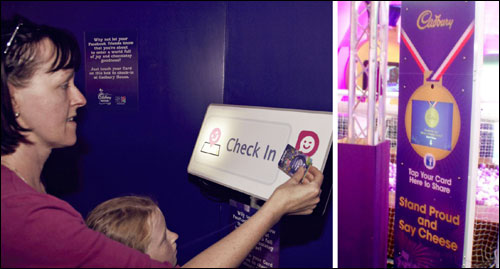
With the RTLS in place, Dutchman is working on the next step: leveraging the RFID data to enable ventilation-on-demand (VoD) for optimal airflow—basically, the process of lowering or raising variable fan speeds within the mine, depending on the number of people and operating equipment in a particular area. The Centre for Excellence in Mining Innovation (CEMI) estimates that VoD for production can lead to a reduction of mining costs of 8 percent to 20 percent through electrical savings. CEMI also heralds the potential for significant production gains—$8 million to $11 million per year—because mining companies can get "more tonnes out of the ground for a lower energy investment."
Managing VoD at Totten should begin by the time the mine moves into full production. "Now that we have a system that knows where everyone and everything is, and now that the RFID tags can let us pull up information about whether a diesel engine is running or not, that combination of information is a useful innovation to feed into ventilation systems and run optimized ventilation," Dutchman says. The fans themselves are heat generators, he notes, and the harder they run the more heat they generate, further complicating the ability to control the temperature underground.
The location information collected by MobileView from the RFID tags will be married with other air-quality data (temperature and carbon monoxide levels, for instance) that is wired directly into its process-control network, to inform "one big algorithm to decide how fast the fans will be running in each area," Dutchman says. "The more information we can get, the more optimized we can run the ventilation."
Monitoring Air Quality
Ventilation-on-demand appears to be the next frontier in developed countries, says David Corey, AeroScout's vertical industry sales director. While the concept has been around for years, the technology has improved and the cost savings for mining companies has now been validated. In addition, some governments are offering incentives to mining companies to encourage them to reduce power consumption on the national grid. Ontario's provincial government, for example, provides funding for such initiatives, he says.
RFID and VoD solutions are also helping mining companies comply with government regulations to monitor air quality to protect workers' health. Finnish mining law specifies that air quality for workers must be good, says André van Wageningen, engineering superintendent at an Agnico Eagle gold mine in Kittilä, Finland, 150 kilometers north of the Arctic Circle. "It's up to us to decide what good air is," he says, "but we don't want to have any incidents or unhappy employees."
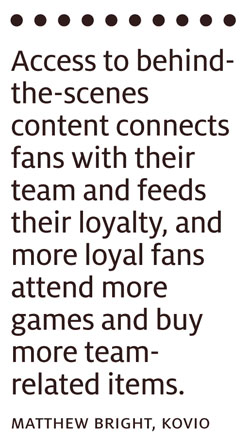
To control ventilation, the Kittilä mine is expanding its deployment of a semiactive RFID solution from Nedap AVI that enables automatic vehicle identification up to distances of 10 meters (33 feet) and speeds up to 200 km/h (125 mph). It tested the solution in one production area, where it installed a long-range vehicle identification reader with built-in antennas and RFID-tagged roughly 20 large vehicles. "It's more when heavy equipment comes in that you need to increase ventilation, so we track heavy equipment," van Wageningen says.
RFID readers are being deployed at the entrance to each production level, to detect what vehicles are arriving or leaving, so ventilation can be increased or decreased accordingly. Each vehicle's tag is associated in a database with ventilation-related information, such as the equipment's horsepower-draw, as well as with information from sensors on the vehicle related to other air quality aspects. This data feeds into a control system to drive the adjustments. Being able to power down fans from running at 100 percent capacity at all times, van Wageningen thinks, should also bring a quick return on investment in electricity consumption savings.
Increasing Personnel Safety
Monitoring air quality is just one part of ensuring worker safety. The Kittilä mine is also introducing an Identec-powered active RFID personnel safety solution in a phased approach. "Personnel tracking is more and more an industry standard in the Nordic mines," van Wageningen says, "and we feel it is just the right thing to do." The mine has issued more than 450 tags to workers, to be read as employees enter the mine, at 100 meters inside the tunnel and then in five different zones. The mine chose to use active technology because "with passive tags the reading distances are too small," he says.
The mine now is taking personnel safety to the next stage—expanding its data network infrastructure to its 10 rescue chambers and installing RFID readers, to identify workers who may hunker down in these rooms during an emergency. A mine typically has pressurized muster areas at different levels, such as dining rooms or workshops, where people try to gather when there's an accident, fire or other disaster. Mines don't usually equip rescue chambers with RFID as a first step because of their distance from conventional muster areas, and because they might not have the data networking infrastructure to support them right away, says Geir Nerbø, Identec Solutions Norway's director of business development, mining and tunneling.
Think of rescue chambers as "the lifeboat in the system," Nerbø says. The rescue chambers are backups to the regular muster areas if personnel can't reach them on time, serving as pressurized containers with supplies to get miners through hours or even days. "Now they can be counted as being in a safe area," he says.
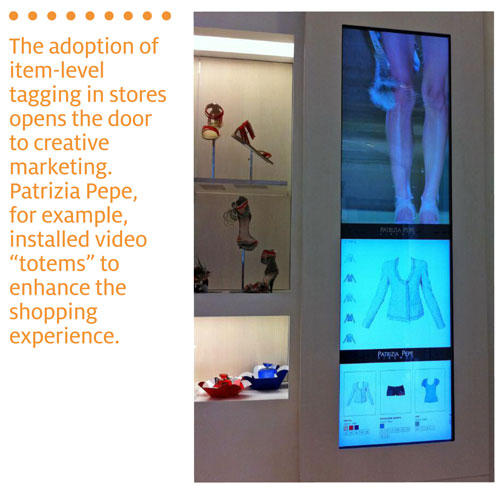
The Kittilä mine is fortunate not to have had any major emergencies. But, van Wageningen says, you can expect a fire to happen every five to six years in a mine this size. In an emergency situation, Agnico Eagle wants to be sure people are in a safe place, and that radio traffic is minimized so important communications for the rescue efforts aren't disrupted. "Using RFID tags in rescue chambers and safe areas will allow us to do so," he says. "Not much additional network requirement is needed as the mine is already equipped with a fiber backbone."
The trend toward using RFID for personnel tracking at one level or another is on the way up, Nerbø says. "In Sweden, for example, there are regulations that tell the mining companies they need a system [though it doesn't have to be RFID-based] that tells how many people they have underground and where they are," he explains. "That is becoming common all over."
But the trend is more common in developed countries. Newmont Mining, one of the world's largest producers of gold, deployed an AeroScout Wi-Fi RFID solution at its Leeville and Midas mines in Nevada; it's tracking more than 600 miners and 95 vehicles to improve worker safety and drive operational upgrades. International mining group Glencore Xstrata also is using AeroScout's solution to improve safety and raise productivity at its Beltana Coal Mine, in New South Wales, Australia.
Managing Priorities
In less developed parts of the world, mining companies are focused more on vehicle productivity, AeroScout's Corey says. "In third-world countries, normally there are 2,000 to 3,000 miners at a site because it's not fully automated, compared to 300 to 700 in developed countries," he says. "They've got a lot of manual labor to draw on, and they want vehicle productivity to get more production out of the same assets."
AeroScout customers in South Africa, for example, want to use the company's Wi-Fi RFID RTLS solutions to know where their equipment is when it's underground, and once they have that data, they can add dispatch systems to help optimize the use of that fleet, Corey says. "Having a dispatcher without real-time location information doesn't work," he says.

Material supply cars, for example, are delivered underground filled with operational supplies via elevator and train, Corey says. "The dispatcher at the surface is not aware when—or if—the material supply car made it to the correct destination, if it has been off-loaded and if it is ready to be retrieved," he says. "So scheduling the delivery and pick up of these supply cars is extremely important, but the only way you can know the current location and off-load status of that supply car is by calling someone on the radio 10,000 feet underground. Using manual methods, the dispatcher is unable to effectively plan the supply car logistics." The materials management team, he adds, is essentially unaware of how much inventory is underground and what has been consumed. "Real-time location improves both logistics and material management in this scenario."
Once an RFID solution is in place to help with vehicle productivity, other capabilities can be pursued. "With our solution, you not only know where the vehicle is but also the hours it's run, who drove it and so on," Corey says. That way, mining companies can perform maintenance based on the number of hours a vehicle was actually used, not just on estimates of how much the vehicle should have been used in a calendar time period.
RFID is also helping mining companies in South Africa meet government regulations that have been introduced to keep unauthorized vehicles out of pit areas where blasting and mining take place, says Attie van Staden, principle presales specialist at South Africa systems integrator Business Connexion. He is working with a customer to deploy an AeroScout solution to address this issue. RFID can automate "the whole vehicle access control process, without requiring any specific human activity from the driver and human intervention from security personnel, to grant vehicle access to the pit area," he says.
Forecast
"There are not that many mining companies in the world, but definitely for the few companies there are, they all are either looking at RFID or doing some small deployments," says Anthony Palermo, director of business development at RFID Academia, in Canada, which has worked on ore tracking and personnel safety systems.
While some mining companies consider RFID, those that have deployed the technology are planning to leverage their infrastructure. At the Kittilä gold mine, for example, RFID also is used to track ore, and van Wageningen is now thinking about adding a collision prevention application.
At the Totten mine, Dutchman says the "big, expensive Wi-Fi network supports many, many things, which makes the RFID implementation itself relatively cheap." He sees opportunities for using RFID to better track processes, such as how many trips a scoop makes from wall face to rock. Dutchman also would like to embed the location data the mine gets from RFID tags into its dispatch systems for equipment. "That's particularly important on ramps to better control traffic flow up and down the mine," he says. "We are trying to optimize those traffic routes, which is partly productivity, but in a great way that's safety, too."
Today, every mine Vale owns has some Wi-Fi in it, if not nearly the depth of coverage in place at Totten. "What we are looking at [installing in the company's other mines] is a slightly more compact version of this, to just give us specific key locations within the mines, to give them Wi-Fi hotspot coverage and to give us some sort of location coverage," Dutchman says.
But for many mining companies, whether a business case study turns into an RFID deployment depends heavily on the ups and downs of the stock market. For example, Palermo says, "The slightest change in the value of nickel can stop a project or any sort of investment in capital expenses."
Tracking Conflict-Free Minerals
In August 2012, the Securities and Exchange Commission (SEC) adopted a rule mandated by the Dodd-Frank Wall Street Reform and Consumer Protection Act to require companies to publicly disclose their use of conflict minerals—tantalum, tin, tungsten and gold, which find their way into everything from mobile phones to jewelry—that originate in the Democratic Republic of the Congo or an adjoining country. While legal appeals are pending, in December, The Wall Street Journal reported that companies must make a "good-faith" effort to determine whether they have been conflict-mineral free this year.
The legislation amounts to a supply chain nightmare, according to the 2012 report, "Conflict Minerals: Another Supply Chain Challenge," by A.T. Kearney, a global management consulting company. According to the report, "Current estimates indicate 700,000 to 900,000 businesses would be subject to some degree of supply chain traceability effort." The report states, "Similar cases in other industries reveal how best to deal with the conflict minerals supply chain... Many food companies are using radio frequency identification (RFID) technology to track food from its point of origin to its retail outlet."
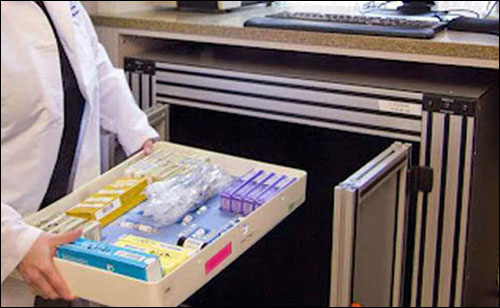
Companies that don't comply may face SEC enforcement proceedings, as well as pressure from human rights and other nongovernmental organizations. This could have a big impact on companies with reputations to protect, says Ann Grackin, CEO of ChainLink Research. "If you are in violation and your self-reporting is erroneous, then the implications of that can be unpleasant for executives in those companies," she says.
ChainLink Research sees RFID as part of the solution to enable assurance of a product's history. Its recent report on RFID for retailers finds the jewelry category continues to rise to the top when it comes to planned use of RFID for securing products. "That's generally more about shrinkage, but some companies told us that with the Dodd-Frank issue there may be an opportunity to look further across the supply chain," Grackin says. "If we can get the right investment in place, they said, RFID could be a good way to know that our shipments are valid and meet the new criteria."
It's not an easy task, Grackin says, and probably would revolve less around mandating the use of RFID and more around "urging suppliers and manufacturers in a collaborative venture to figure out how to work productively with them, so there is a win-win here somehow."

